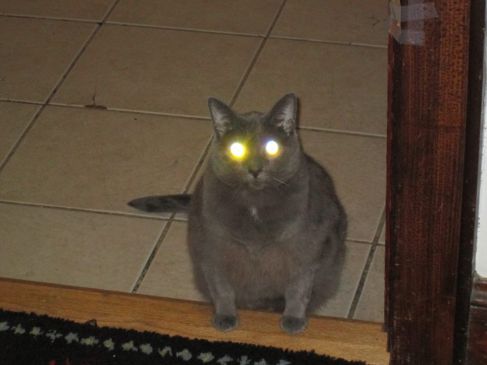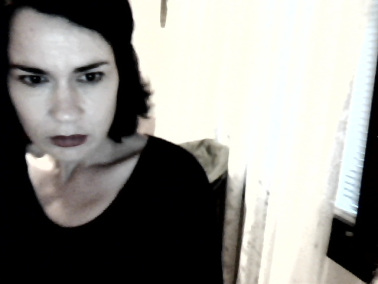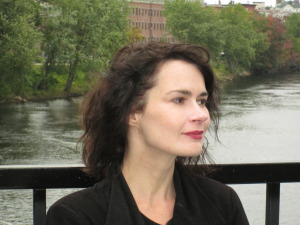
When you are a reader and writer of literary fiction, confessing to a fondness for certain ‘lesser’ writing genres casts one’s tastes and sensibilities into question. But I’m going to admit it here: I am a reader of many, many classics and an avid follower of some of the most brilliant writing minds of our day– and yet I cannot enter a bookstore or library without scouting out its true crime section to see if there are any titles I’ve missed.
If you are a ‘serious’ reader or writer, you might understand why I am hesitant to own up to this secret obsession of mine. True crime books deal with ugly subject matter– so ugly, in fact, that some stores won’t even sell them. I recently had this is experience in a large used bookstore when I asked where I might find the true crime section; the shopkeeper looked at me as though I had laid an egg and icily responded, “We don’t carry true crime. The owner doesn’t like it.” Suddenly, I felt the same shame I used to witness on men’s faces when I walked past them, as a nubile youngster, perusing the dirty magazines at the local book chain (this, before the days of plastic wrappings and easy-access Internet sites).
Why true crime, you might ask? (Or, for that matter, why any crime at all?) The protagonist of my upcoming novel, What Has Become of You, has this to say on the subject of committing crimes and writing original works: “It’s all about creation vs. anti-creation. Building vs. destroying. They both require a lot of energy, don’t they? The difference between the two vocations might as well be arrived at by a coin toss.” I am happy that my vocation falls on the creative side rather than the anti-creative one, but I have always wanted to understand the mind that takes the darker road in hopes that perhaps we can stop the anti-creation folks in their paths. It is because of this that my second novel is partly a crime novel, though to call it a ‘thriller’ or ‘psychological suspense’ seems a little reductive.
There are many crime books that have influenced and affected me over the years; more commonly, I have seen those pulp-ish, quickly churned out true crime tomes that come and go and have bypassed most of them. You know the ones I am talking about– the ones with the slick paperback covers, the tawdry titles, and “22 pages of never-before-seen photos” (usually consisting of a blood spatter snapshot and the exterior of somebody’s death house). In order for a true crime book to speak to me, it has to offer a bit more than a salacious headline. Generally, these are the criteria that help me decide whether a true crime book is worth my while:
-1. Does the book teach me something about human nature that I might not have known before? Or, alternately, does it reinforce a belief I had about human nature– one that seems fairly credible?
I will give you an example of a book that did exactly that. Killing for Company, by Brian Masters, is an account of Scottish killer Dennis Nilsen, who slaughtered and dismembered fifteen men between 1978 and 1983. A pre-Dahmer-esque figure, Nilsen attempted to preserve men’s bodies in hopes that he might be able to keep these people with him always– until, of course, the decomposition process made this impossible. Nilsen’s diaries figure heavily into the text of Killing for Company and add stunning insight into the tormented mind of the serial killer:
“I did it all for me. Purely selfish. I worshipped the art of death… Afterwards it was all sexual confusion, symbolism, honoring the ‘fallen.’ I was honoring myself. I hated the decay and the dessication.”
And later, poignantly, Nilsen stated: “It must be the most wonderful gift to be able to throw your arms around someone and just weep.”
Anyone with a heart and soul cannot help but weep (metaphorically, at least) for those whose lives were lost at the hands of Dennis Nilsen. But the more we hear his words, the more we understand the fractured psyche that created the monster– and while that may not make us feel compassion for him, it certainly adds to the layers of grief.
- Is the book beautifully written? When I think of beautifully written true crime books, the canonical ones come to mind: The Executioner’s Song; In Cold Blood. But the one that often gets overlooked– the one I would like to mention today– is Emlyn Williams’s Beyond Belief, a novelization of the Moors Murderers.
The so-called Moors Murderers were Ian Brady and Myra Hindley, a young couple who had tortured and slaughtered at least five young persons between 1963 and 1965 and buried the bodies in the moors of Northern England. By all reports, Ian, who was a devotee of Nietzsche and of Mein Kampf, was the brains behind the killings,, while Myra– a pliable young woman who was used to rough ways– became his devoted accomplice, resulting in the perfect folie a deux that is the hallmark of many serial crimes. The fact that Emlyn Williams took on this subject matter is interesting in and of itself; Williams was an extraordinary writer and actor and bon vivant, perhaps best remembered for his plays and film work (The Corn Is Green and the tragically neglected Night Must Fall, starring Rosalind Russell). For such a distinguished man to easily assume the voice of a working class killer with grandiose aspirations must have been a stretch, and the results are not only colloquially accurate but almost Joycean in its poetry.
- Is the writer objective where objectivity is needed and compassionate where compassion is called for?
A book that meets this criteria, to my thinking, is Gitta Sereny’s Cries Unheard: The Story of Mary Bell. This is is a biographical account of a young girl from Newcastle-on-Tyne who was convicted of the strangulation deaths of two young boys (ages 3 and 4) when she herself was only eleven years old. When this conviction went down in 1968, the child killer was an unknown phenomenon, and Mary herself was regarded (rightly or wrongly) as a ‘bad seed.’ Sereny explores Mary’s early childhood and later years in a manner that balances fact with heart and makes a compelling case for the notion that this was a young girl who simply had too many strikes against her from the get-go.
I tend to believe that anyone who reads should not be ashamed of his or her reading choices; after all, in a society where fewer and fewer people take the time for ‘pleasure reading,’ shouldn’t we applaud those who endeavor to read for the sheer joy of it, regardless of subject matter? And in the case of true crime readers, I would say that that they still stand a chance of stumbling upon some human truths, some aesthetic beauty, and an all-embracing compassion that, in the right hands, can equal that found in our finest artistic works.

